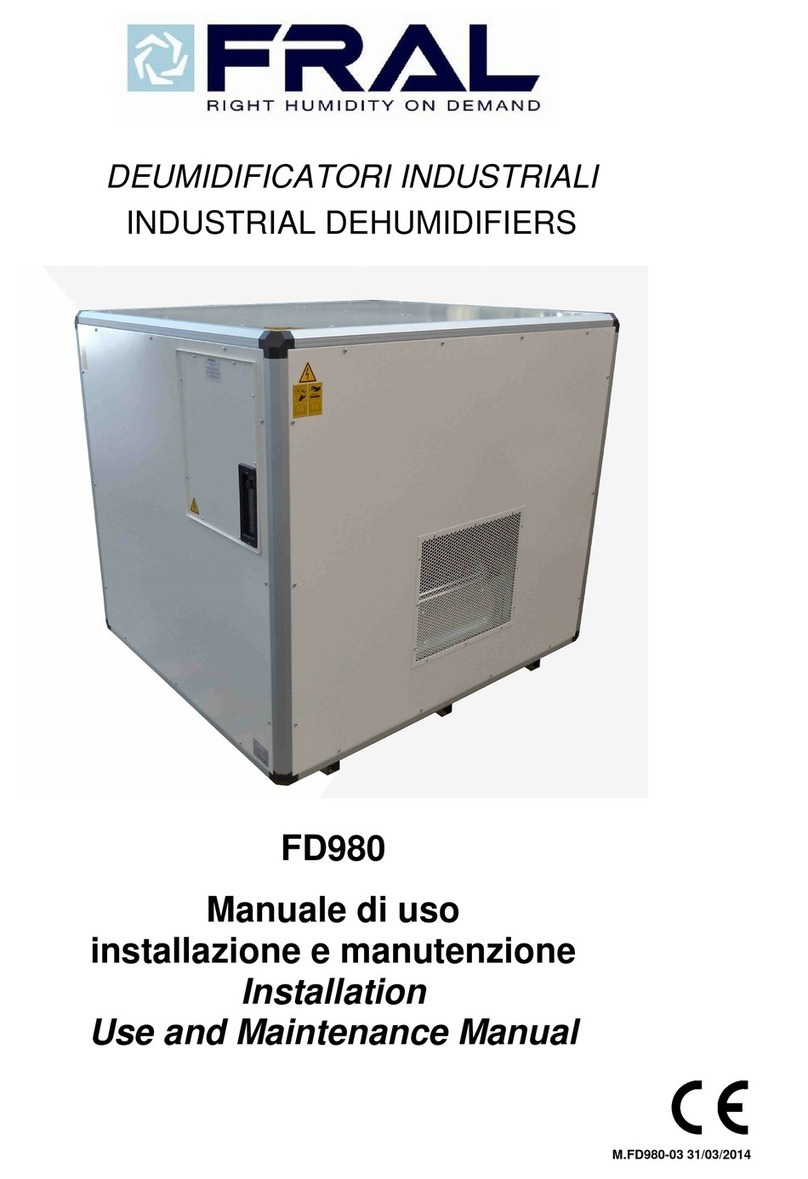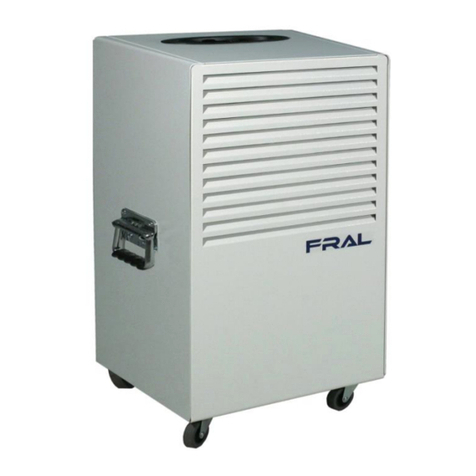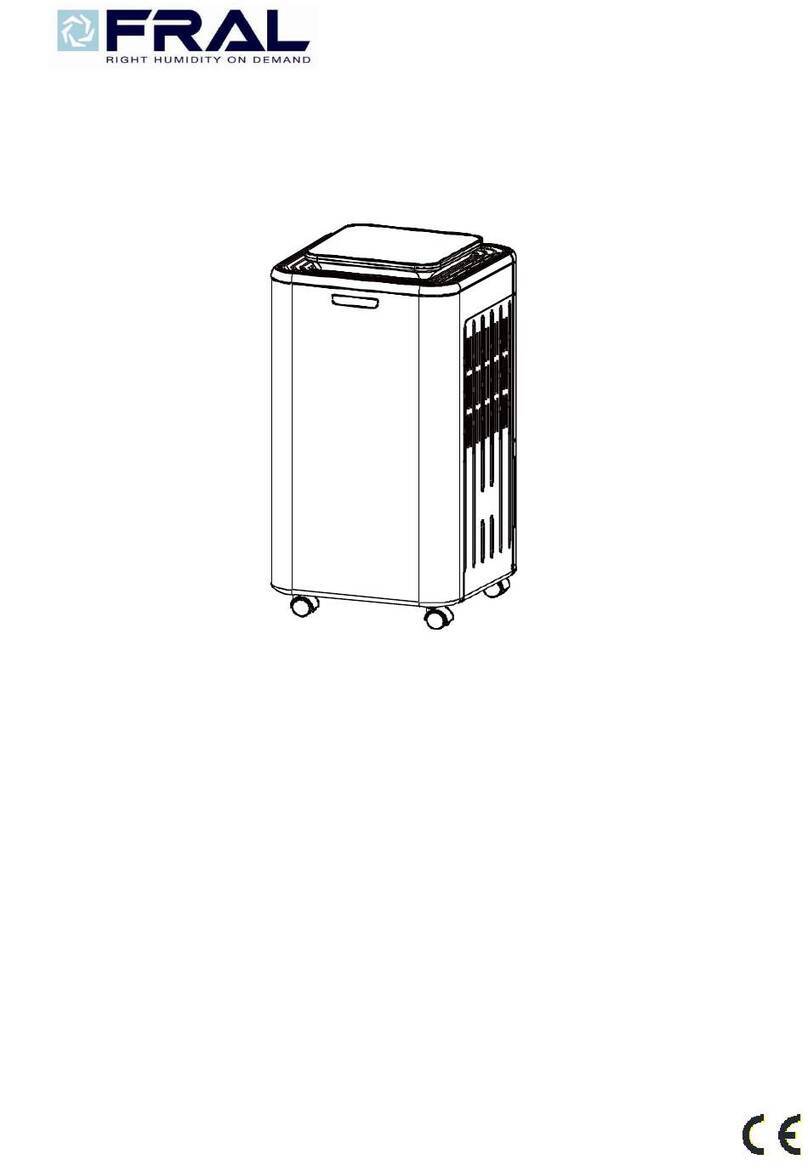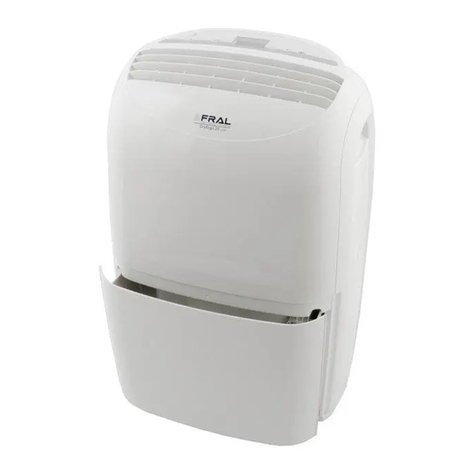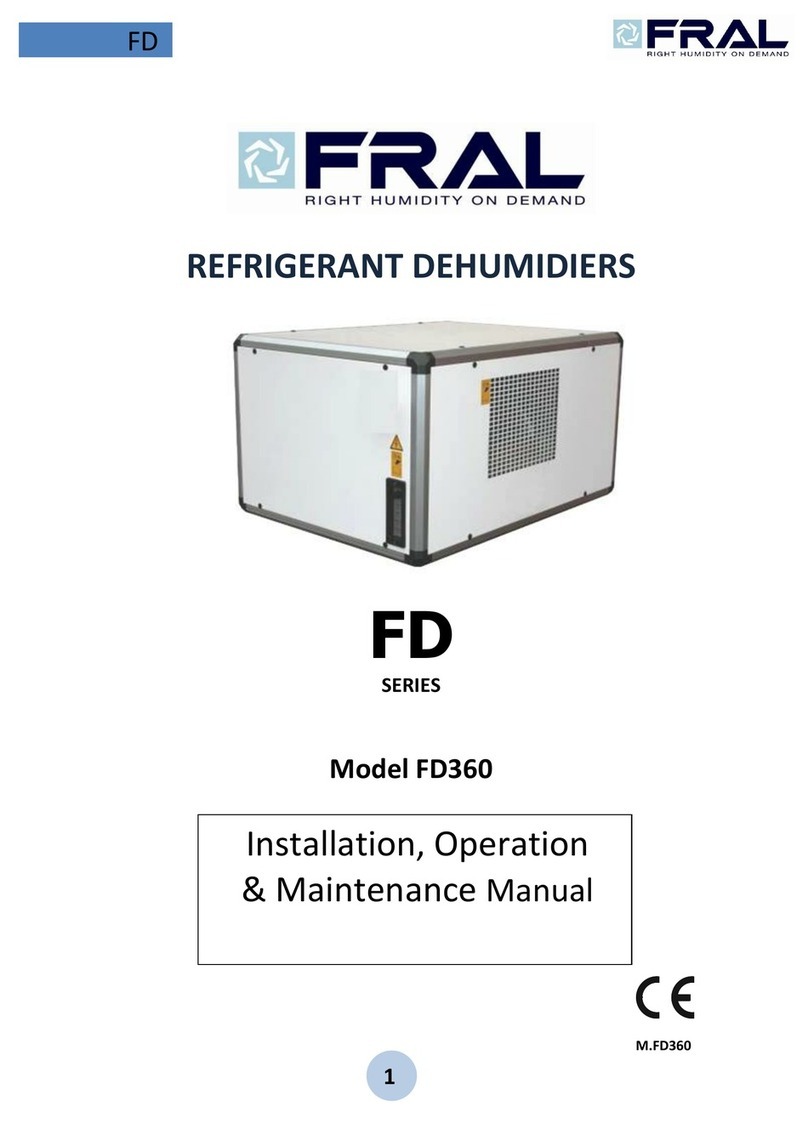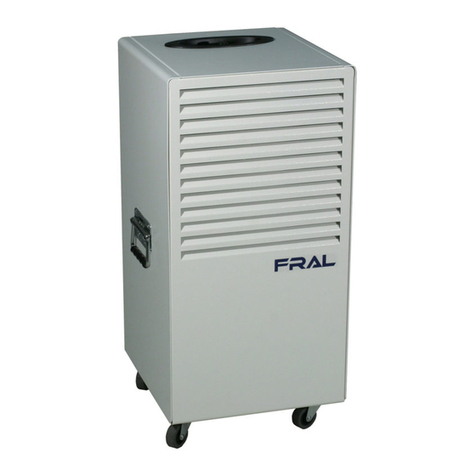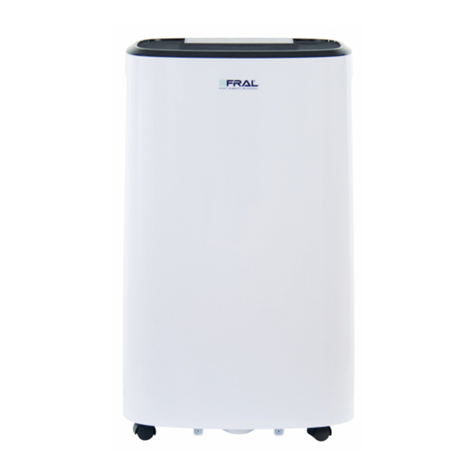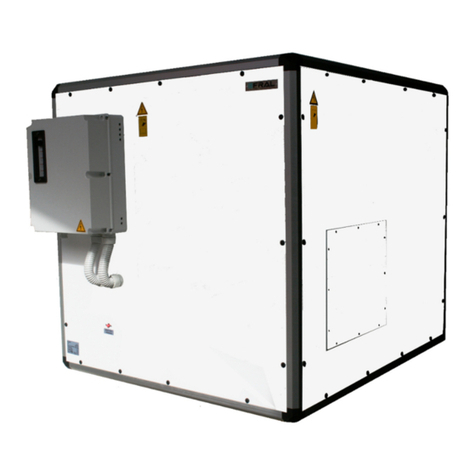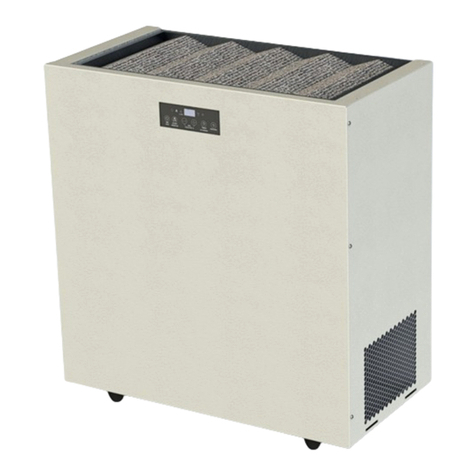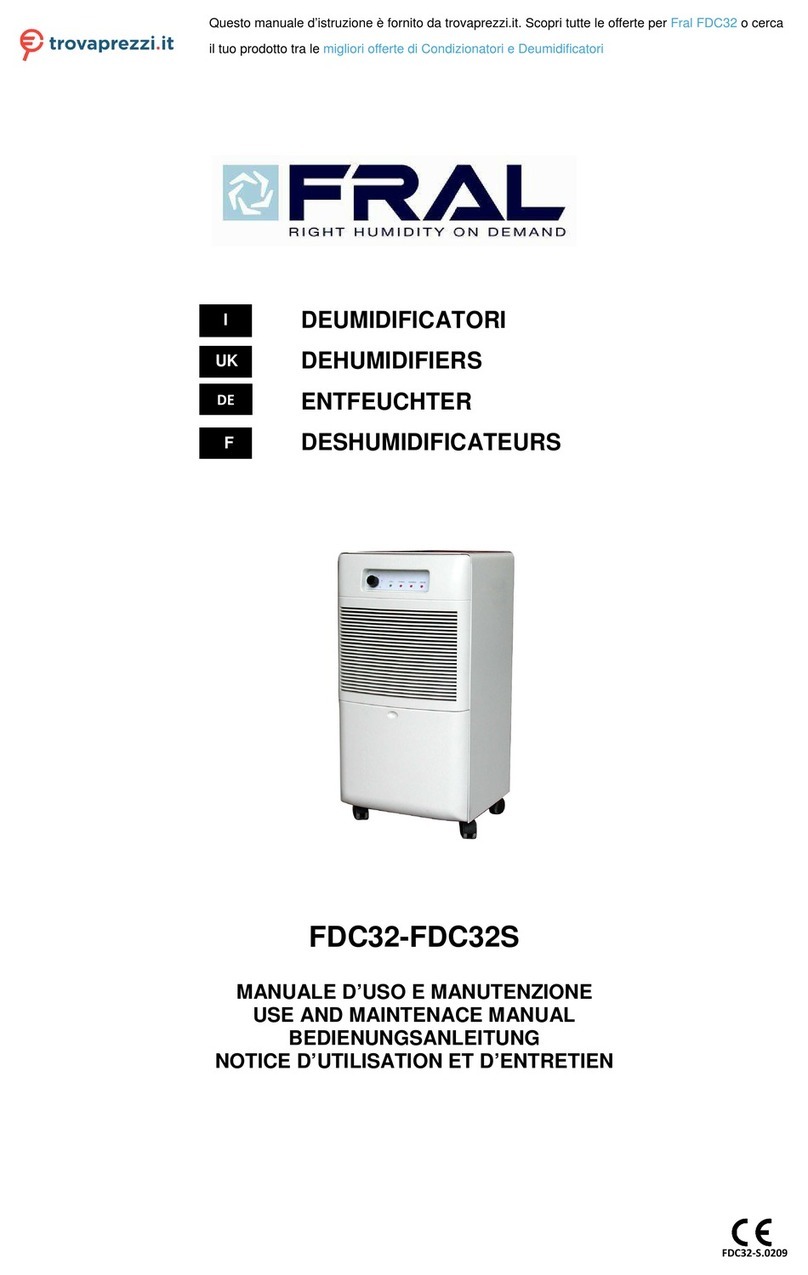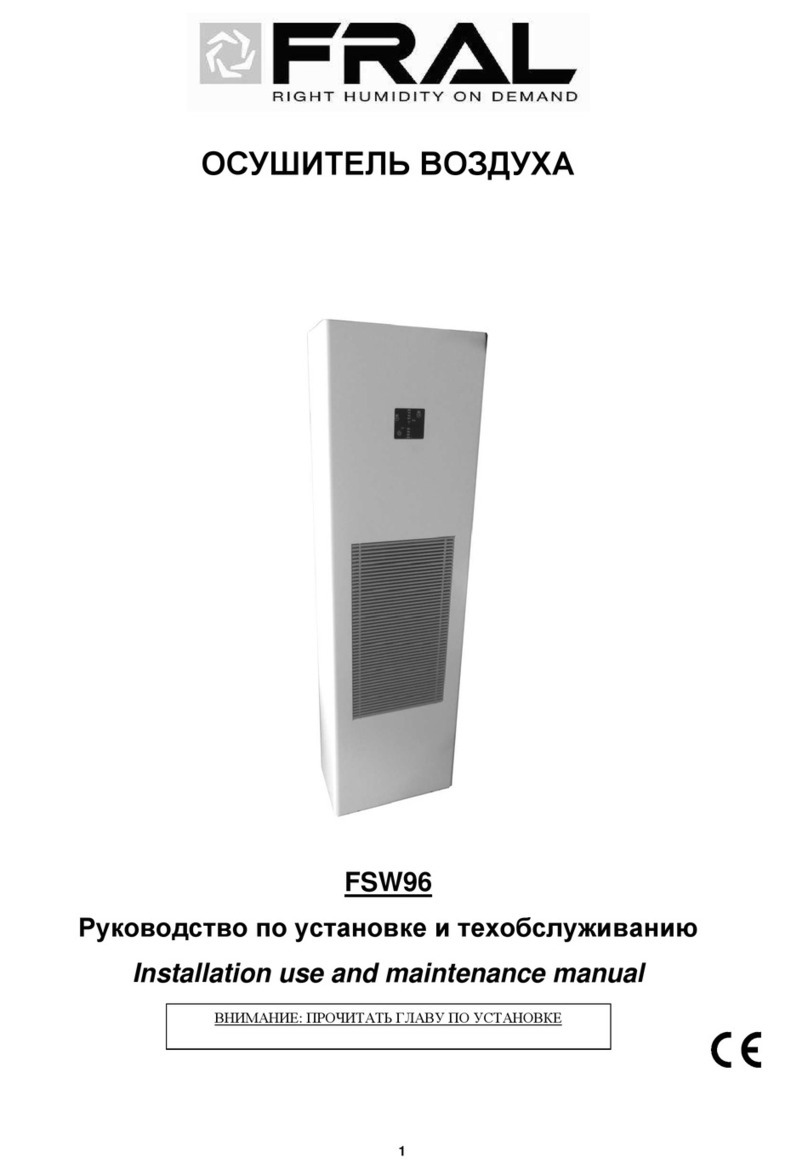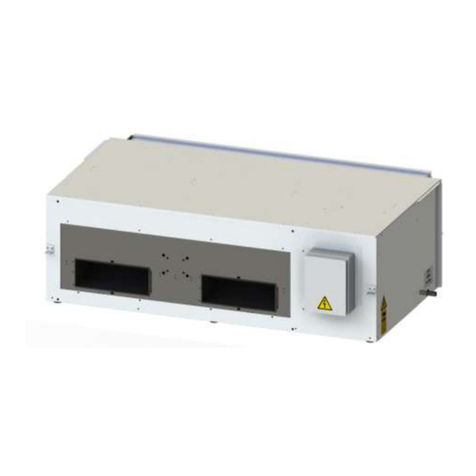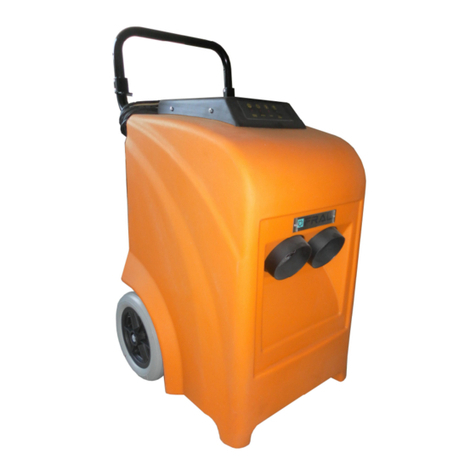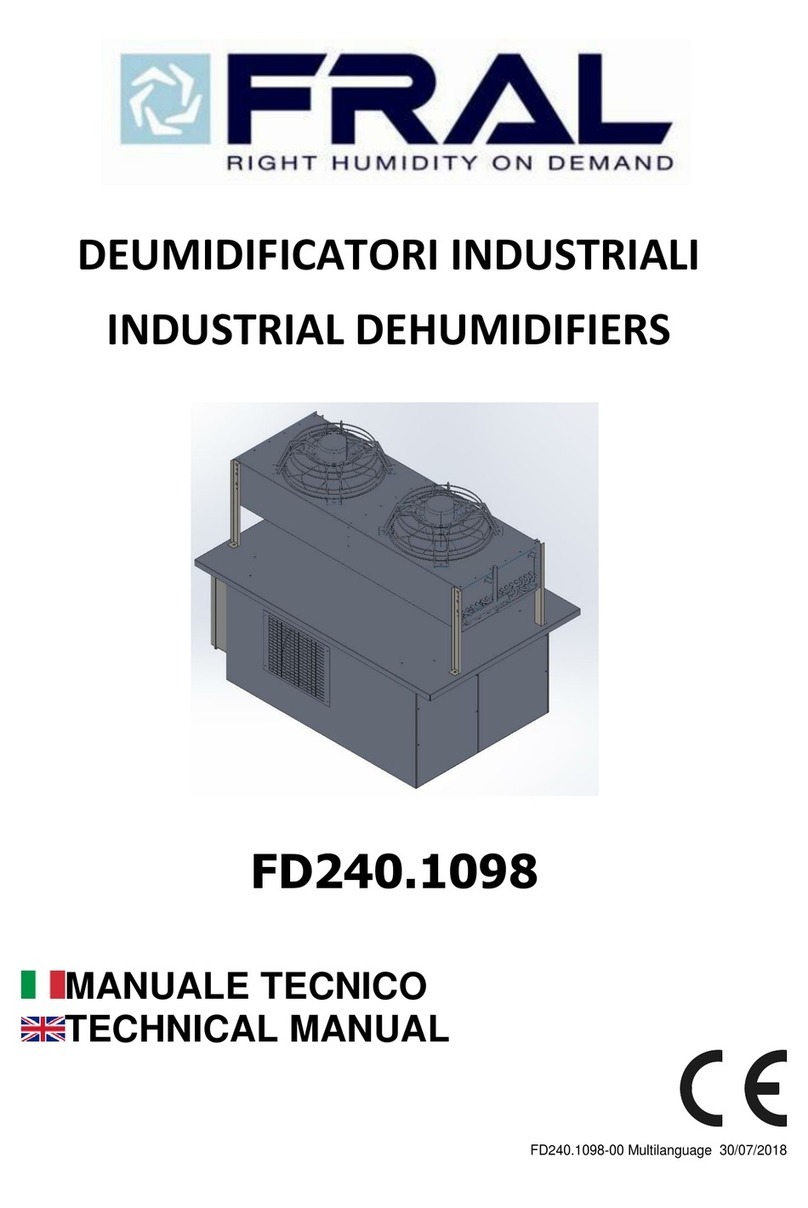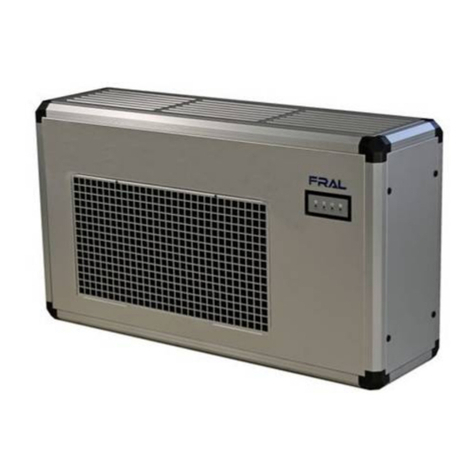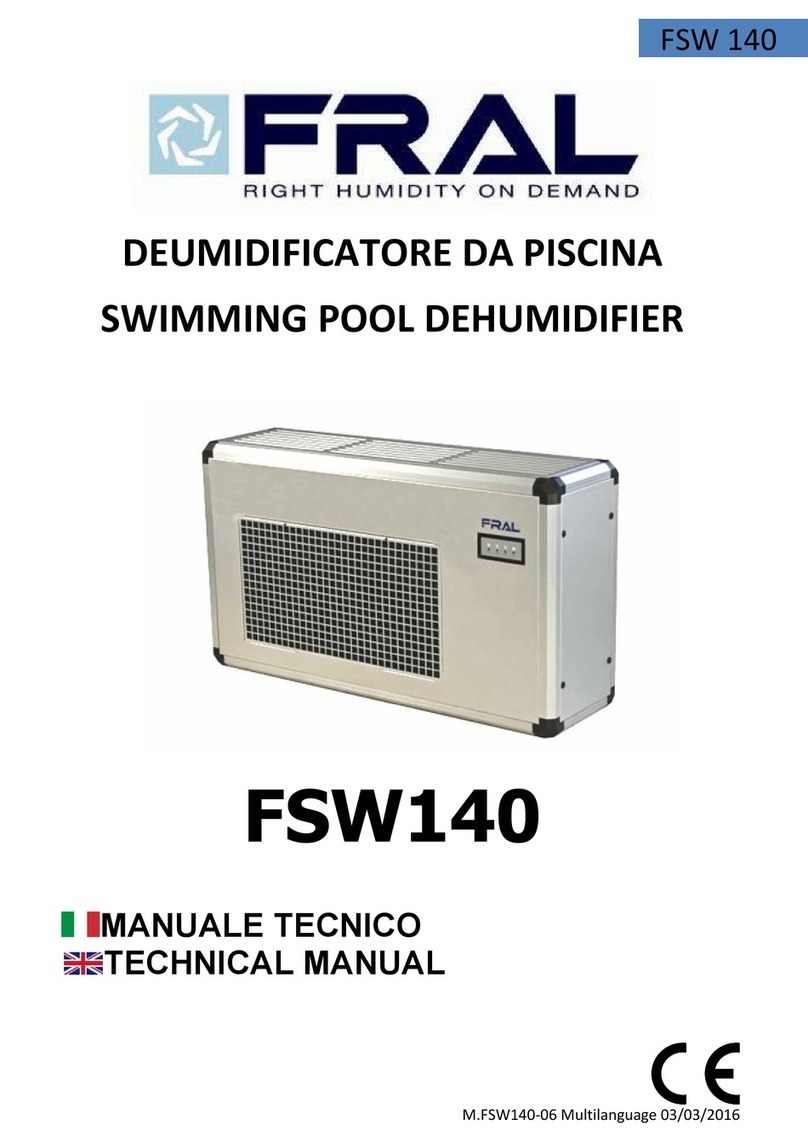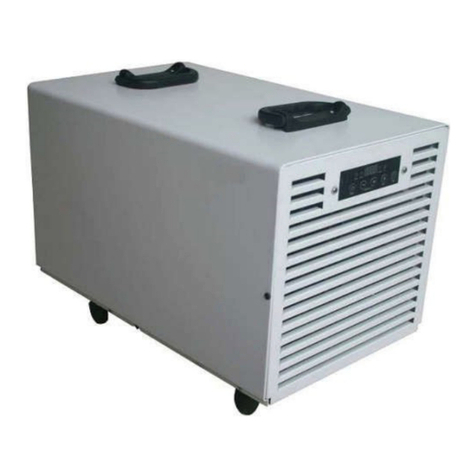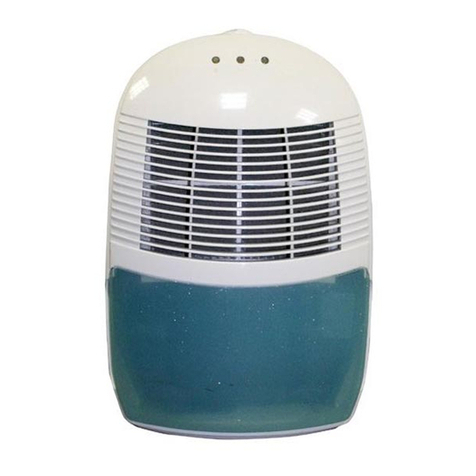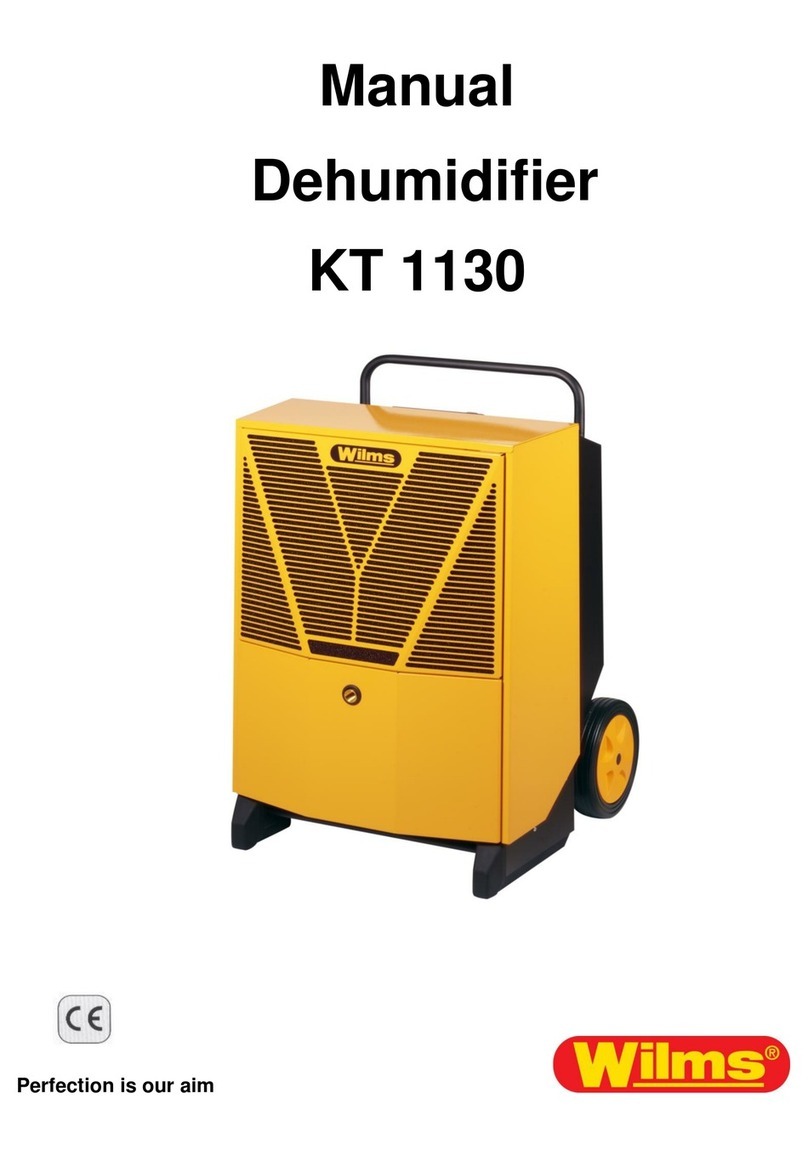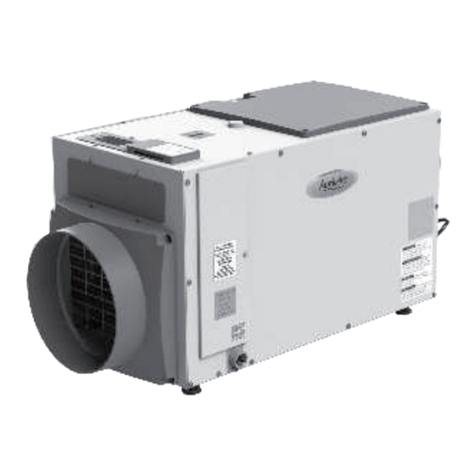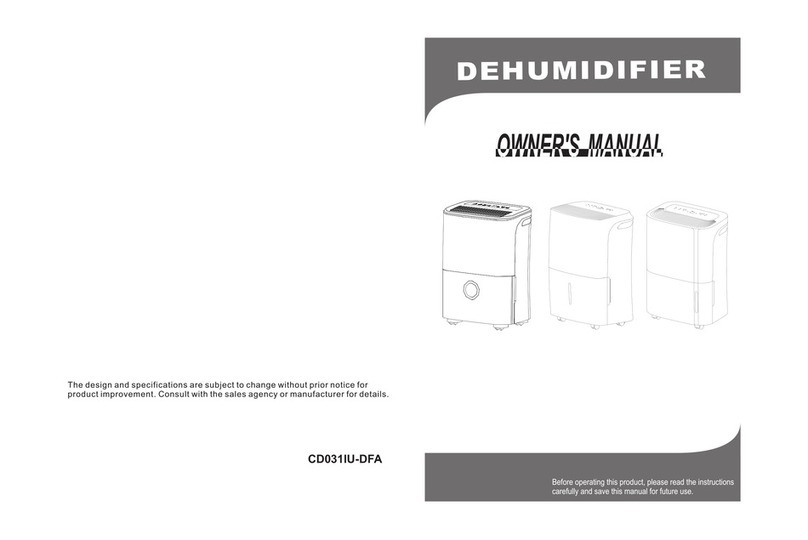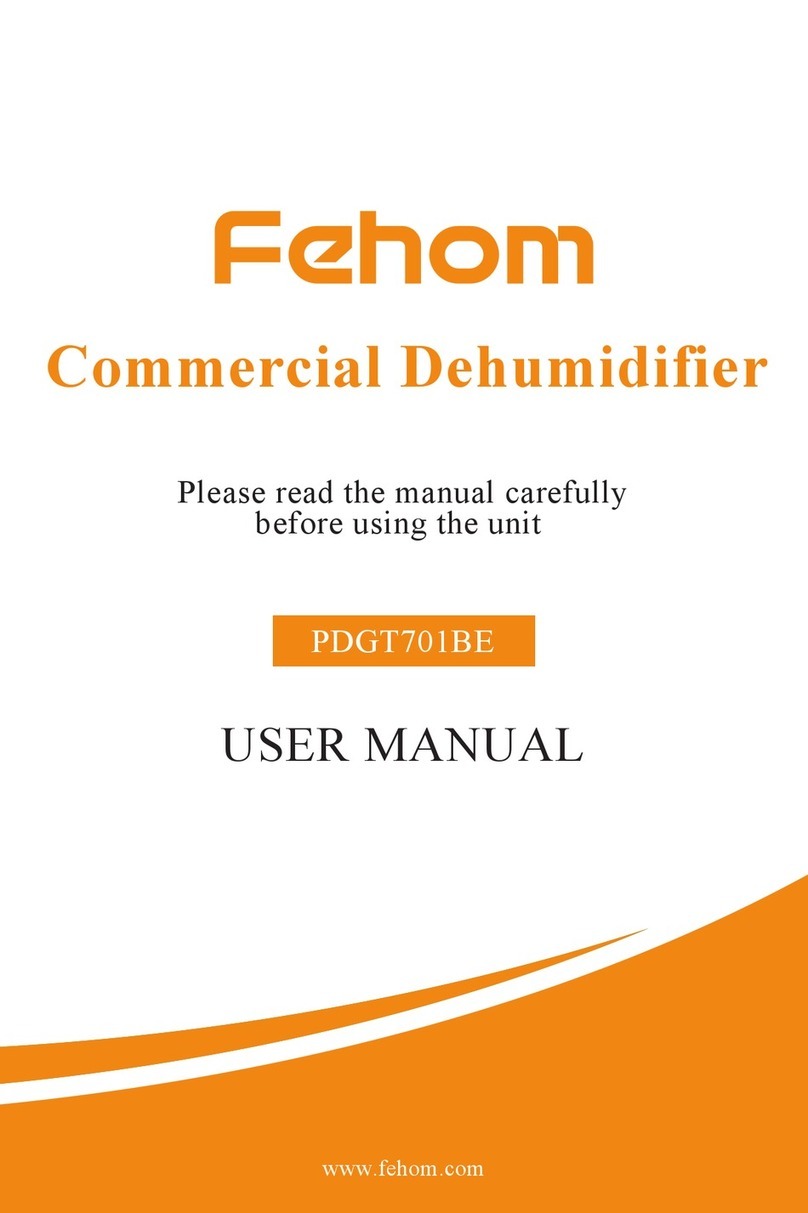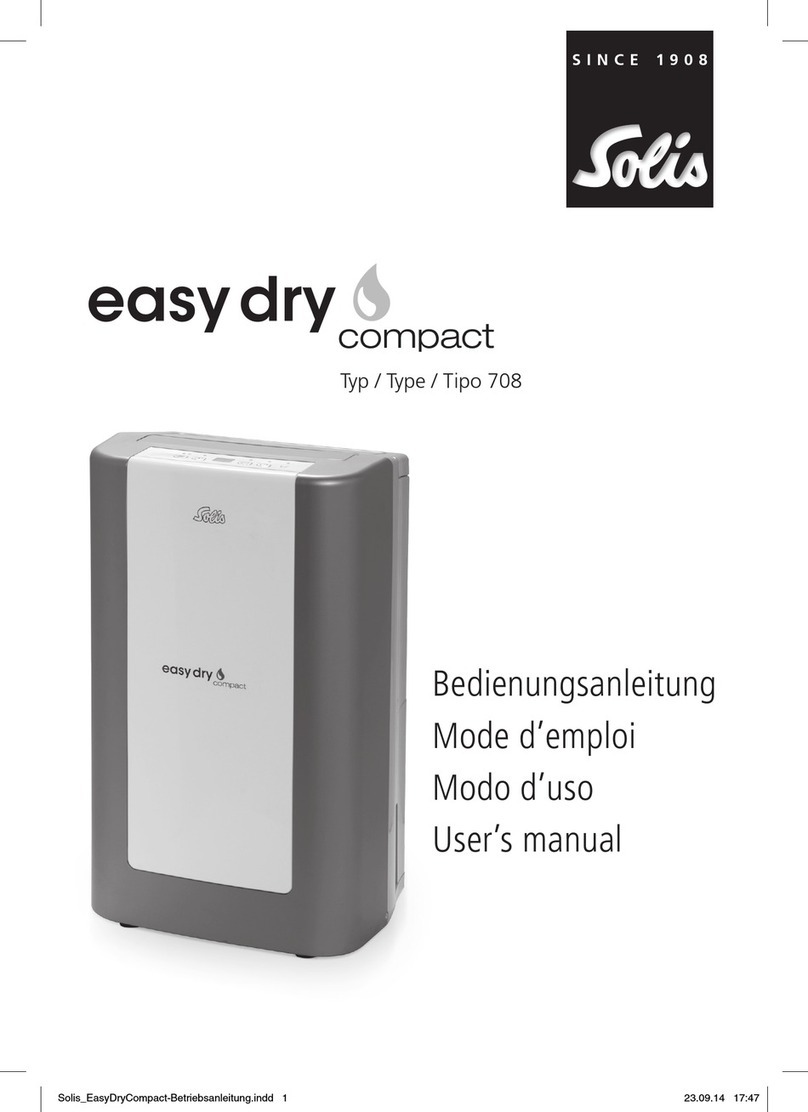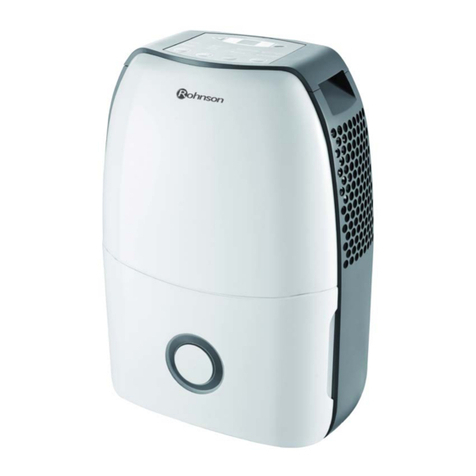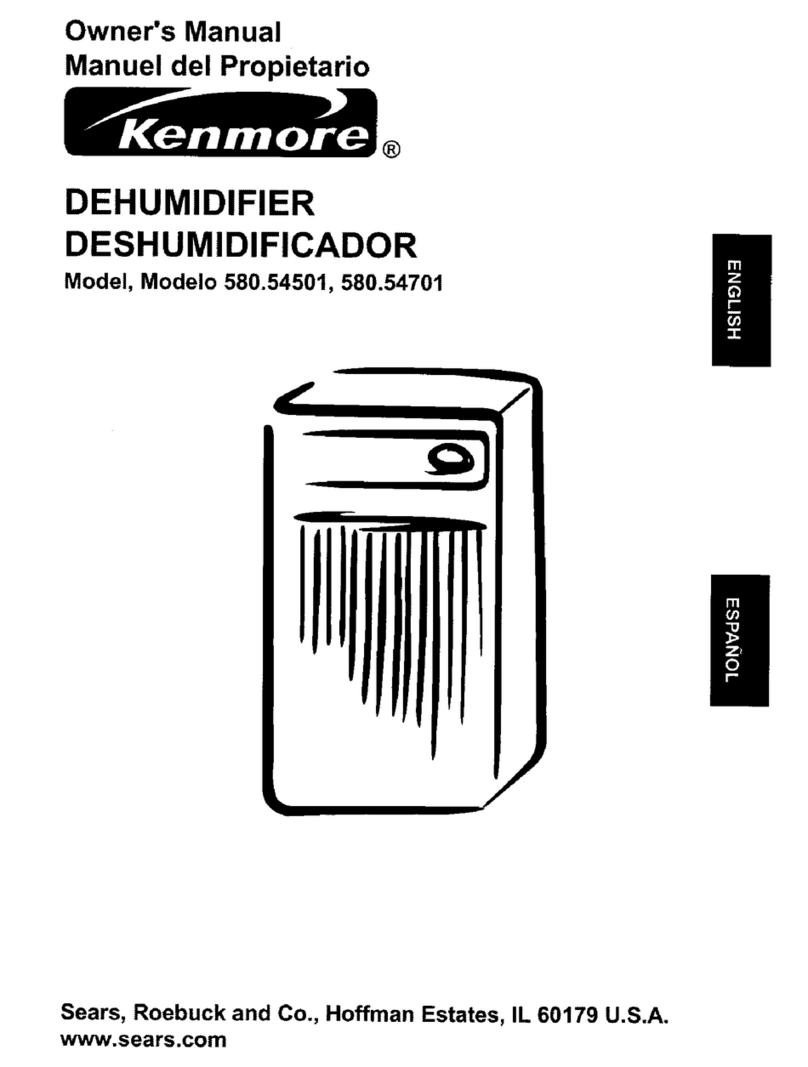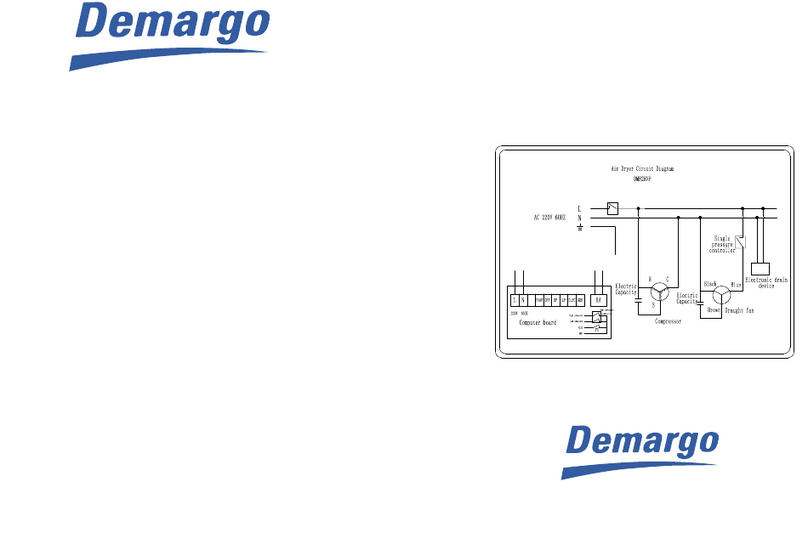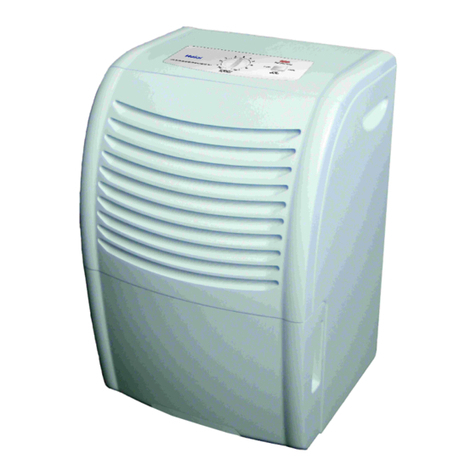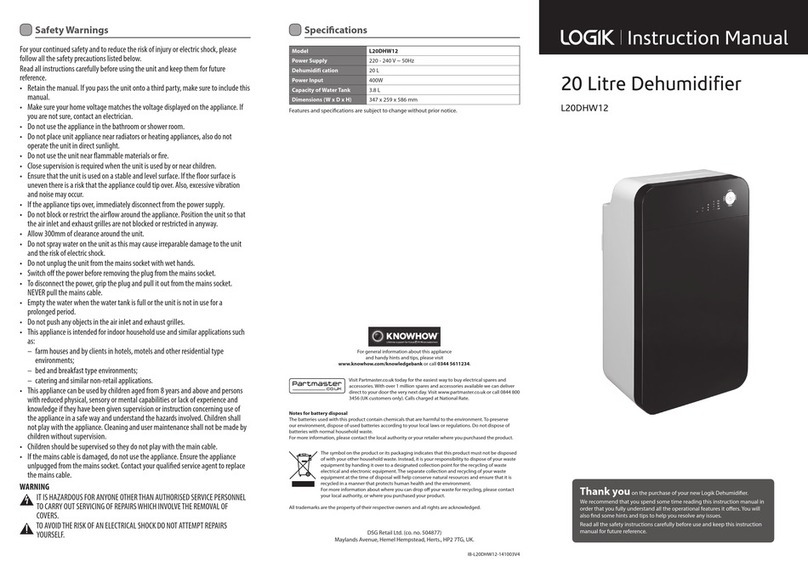
9
3.2 FIRST STARTING OF MACHINE
First Setting into function
Before starting the dehumidifier, make sure that the machine has been standing in vertical position for
at-least 2 hours. If one fails to observe this procedure, an unrepearing damage may be caused to the
compressor. Then one can proceed and connect the dehumidifier plug to a 230 V - one phase power
socket. The red light 'Power" will switch on confirming correct supply of power to the machine. If the light
'Functioning' is still off, turn clockwise the knob on the control panel till the light 'Functioning is 'On'. The
light 'Pause' will also switch on and, after 5 minutes the dehumidifier will start dehumidifying.
AND IF THE DEHUMIDIFIER DOES NOTSTART
OR DEHUMIDIFY ?
• First make sure that the red light' Power' is' On': this means that the current is fed to the machine. If
the power supply light is not on, make sure that the connecting wire plug may be properly inserted into
amain line socket in the room. After checking all this, if the power light is still off, then call the dealers
service.
• Make sure that the greeN light 'FULL' be off; If this is not the case, check the correct position of the
water tank in its seat by moving the tank until the microswith clicking in is heard. Before making this
control, you must obviously make sure that the tank be empty and that the float lever be in its seat.
• Make sure that the red light 'RUNNING' be 'on'; this means that the Humidostat activates the functio-
ning of the machine. When the dehumidifier is set again to functioning, after an idle period due to the
reaching of the preset humidity or after emptying the water tank, if the Humidostat requires functio-
ning of the machine, then beside the two red central lights, also the red light 'Pause' will light up.
• During this 5 minutes long phase, only the motor fan is running whereas the compressor is off. This
operating cycle takeplace every45 minutes to allow the defrosting of the cooler. When the red light
'Pause' will remain off for a period longer than 6 minutes, the dehumidifier should be brought to
Dealer's service centre.
•When the machine appears to be working correctly ( the twocentral red lights are on), but it is not pro-
ducing condensed water or produces only very little condensed water, it should be checked whether
the relativehumidity in the room maybe lower than 40.45%; if the relative humidity is higher than that,
the machine should be controlled by the dealers service.
4. CONNECTION TOADRAIN PIPE
the machine has the possibility to be connected with a fixed drain pipe to the water tank which is already
provided with a fitting with rubber hose holder. In this way the overflow stop continues to work as a safety
device in case the drain pipe may be clogged.
To connect the machine tank to the drain pipe, it is necessary to make a hole on the rubber hose hol-
der, which is placed in the lower side of the tank. It is advised to make the hole right in the centre of the
ENGLISH
